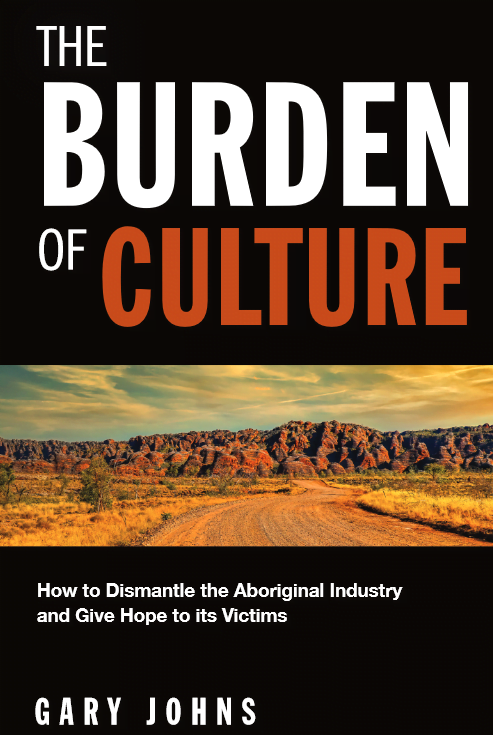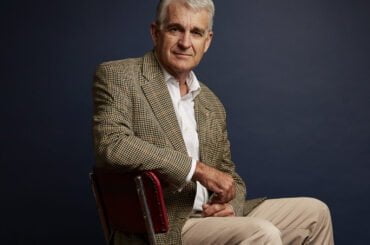In Context
As former Member of Parliament and expert on Aboriginal issues, Gary Johns, points out, at the heart of Australian policy on Indigenous Australians is a contradiction. On the one hand the goal of policy is to close the gap of disparities between Indigenous and non-Indigenous Australians with respect to health, education, income, and employment. On the other hand, there is an emphasis on promoting Indigenous culture as a way of improving the lives of Indigenous Australians: teaching Indigenous languages, respecting Indigenous medicine, keeping children in Indigenous households, and staying “on country” hundreds of kilometers away from major towns and cities. But what if the reason it has proven to be so difficult to close the gap is precisely because Aboriginal culture is preventing Aborigines from living their best lives in the modern world?
But there is another story in this book. It is the story of a massive bureaucracy dedicated to solving the problems of the 20% but which to a large extend seems utterly incapable of doing so. At the same time, there are elites in this bureaucracy that earn very good livings from the billions of dollars budgeted every year to solve the problems in Aboriginal communities. Part of the task is to actually dismantle much of the “Aboriginal industry” that, at best, has done very little to close the gap over the decades, or at worst has actually made things worse by promoting ideological policies doomed to failure.
Big Ideas
- 80% of Indigenous Australians are living lives roughly at parity with non-Indigenous. It’s 20% who are severely disadvantaged
- The more integrated into mainstream Australian culture an Indigenous Australian is, the more likely s/he is living a life of equal outcomes
- All Australians must stop marking whether or not they are Indigenous on forms in order to starve the Aboriginal industry
- Moving off the land and into towns and cities is crucial for closing the gap
- A Voice to parliament will only entrench a sense of victimhood and entitlement
The Identity Trap
“There’s more to life than being Aboriginal”, is a phrase Johns repeats throughout this book. But it seems as though the policy makers for Aboriginal welfare think differently. For so much of what drives their policy is the desire to keep Indigenous Australians tethered to Indigenous culture, rather than equipping them to integrate successfully into mainstream Australian culture.
As Johns says, “Self-determination has delivered power into the hands of a small number of people who run health centres, some land councils and the like. Mostly it remains in the hands of public servants enthralled by an ideology of self-determination that will ensure the free flow of moneys and the continued dependence of Aboriginal people on those public servants. Have they delivered self-determination to Aborigines, or simply a new dependence, a maladaptive one?” [194-5]
Johns goes on to carefully detail the harmful effects of leaving Indigenous Australians mired in a culture that is unable to allow Aborigines to flourish in a modern world.
Are Indigenous Australians Disadvantaged?
Yes and no. Johns points out that, in fact, 80% of Indigenous Australians live lives with roughly equal outcomes to non-Indigenous Australians. Of the 80% of Aborigines doing well, 70,000 have graduated from TAFE and 50,000 from university. (425) Nearly 70,000 Aborigines have gone to university the past 20 years, with 12,000 in the system now (367)
It’s the 20% of Indigenous Australians that are doing very badly; that are suffering. Around 20% of Aboriginal males are in jail or have been in jail. Aboriginal incarceration rates have increased 41% between 2006-2016. (4) Aborigines made up 30% of prisoners in 2021; 78% of Aboriginal prisoners in 2021 had been imprisoned earlier (57)
The reason there is any improvement in the Closing the Gap measures is that more people – middle-class and urbanized – are identifying as Aboriginal for the status and benefits. (3) In fact, the estimated Aboriginal population of Australia between 1901-1966 was a steady 80,000; it is estimated to reach 1mil by 2031 (202)
Is Racism Causing Disadvantage?
There is little good evidence that the disadvantaged 20% are kept in that state by either direct racism or a so-called systemically racist system. In fact, many of the causes of disadvantage are clear, and affect non-Indigenous Australians too. In 2012 15% of families in Australia were single parent, compared with 40% of Aboriginal households. (69) 92% of WA Aboriginal births were ex-nuptial, with paternity not acknowledged in 21% of births. (77) A 2017 study on Indigenous families said over 40% of carers for children were unpartnered; 44% said they were raised in households without the biological father. (209) Only Around 14% of children in remote NT communities attend school regularly. (391) There is also the tyranny of distance. The 20% doing very badly often live in very remote areas where there is little employment and little chance to integrate into the mainstream culture that will make it more likely that their lives will improve.
But if we define racism as treating someone differently based on their race, which results in their disadvantage, then, yes, we can say that racism – the racism of the Aboriginal industry – is partially the cause of Indigenous disadvantage. As Johns says, “The best way to help Aborigines is to stop privileging victimhood and to treat Aborigines as citizens [not dependants].” (445)
Dead-End Policies
Indigenous languages There is very little evidence to suggest that mastering one’s Indigenous language contributes much to one’s life outcomes. The 2016 Census reported that only 12 Indigenous languages had more than 1000 speakers (395) Of the top 10 languages being renewed in Australia the number of speakers varied from 40-450; child speakers only from 12 to 130. (410) In other words, the languages being learned do not open up to a wide world of communication. There is nothing wrong with wanting languages preserved, but in current circumstances the opportunity cost is massive. Every hour teaching an Indigenous Australian a dying language is an hour robbed in teaching proficiency in English, the very language needed to escape disadvantage and thereby close the gap.
Child Placement Policy In 2019-20, one in 18 Aboriginal children (around 18,900) were in out-of-home care, eleven times the rate for non-Aboriginal children.” (118) The Aboriginal Child Placement Principle (since 1987) is premised on the supreme importance of Aboriginal children being raised in Aboriginal culture. The policy directs social workers to place children with Indigenous families where possible. But it can be applied too mechanistically and bloody-mindedly, and is potentially to the detriment of children. (111-12, 121, 186-189)
Remaining regional “Although Aborigines living in remote communities on their own land are the most ‘cultural’, they are also the most ‘disadvantaged’ of all Aborigines.” (338) Johns points out the awkward truth that most Indigenous Australians are both doing well and not living on the land. They are urbanised. It’s hardly surprising that people who live hundreds of kms from hospitals, good schools, jobs, and modern conveniences would be faring less well in terms of health, income, employment, and education than the rest. The hard truth is that the Aboriginal Industry’s encouragement of Indigenous Australians to stay in remote locations is contributing to the seeming impossibility of closing the gap. Much as non-Aborigines and many of their Aboriginal spokespeople have gotten off the land and moved into cities and suburbs, so must the Aborigines who clearly aren’t able to flourish in those circumstances. Rather than “sit down money” there should be “walk away money.” (443)
No Indigenous Voice?
There are fifty peak councils in Australia representing thousands of Aboriginal organisations. (2) Many of these organisations liaise directly with the ministers for Indigenous affairs in every state and territory. There are currently 22 members of Australian parliaments of Indigenous descent. (457) The combined income of the top 500 ATSI corporations for 2015-16 was 1.92 billion, more than double the income 10 years prior. (164) With these figures Johns shows that the suggestion that Indigenous Australians lack a voice to parliament to be untrue. Furthermore, this voice is effective, at least in generating revenue. In 2015-16 total government expenditure on Aborigines was $33.4 billion, or $45,000 per Aborigine, twice the $22,400 spent on non-Aborigines. (42, 435)
The proposition of a so-called Voice to Parliament can only further harm Aboriginal Australians:
“The proposal is one that rewards one section of society to ask for something different, and if it keeps asking, it must be heard, there is no end point. In the broadest sense, parliament is meant to offer a place to resolve societal issues, and move on from them, but this body is explicitly established to not move on. Its very existence is predicated on not moving on. The voice, in any of its formulations, will institutionalize the dependence relationship between provider and supplicant.” (345)
Policy Recommendations
1.
-
- Stop ticking the Indigenous identity box on forms. It merely feeds the Aboriginal industry and justifies ever expanding budgets;
2.
-
- Stop offering acknowledgements and commemorations. They are perpetual reminders of colonialism and perpetuate victimhood;
3.
-
- Celebrate the Referendum result of 1967 when Indigenous Australians were “counted and treated as equals” (438)
4.
-
- Celebrate ‘Intermarriage Day’ (30 December). (439) Around 60% of Indigenous marriages are with non-Indigenous spouses (82% in Melbourne!). Intermarriage is the ultimate sign of reconciliation and unity between races;
5.
-
- Give benefits only to those who can prove Indigeneity;
6.
-
- Stop treating Aborigines as necessarily sick and vulnerable;
7.
-
- No race-based programmes by 2030;
8.
-
- Pay “walk-away” money for Aborigines to establish themselves in mainstream society (off the land);
9.
-
- Stop the Child Placement Principle;
10.
-
- Leave the Constitution alone. “Aboriginal despair will not be abolished by constitutional change.” (337);
11.
-
- Intervene earlier in the lives of children at risk (within the first 100 days of birth);
12.
-
- Enforce school attendance;
13.
-
- Spend every spare dollar on school scholarships, especially scholarships that allow children to live away from remote communities;
14.
-
- Make trusts transparent;
15.
-
- Make Aboriginal service provision programmes contestable and competitive;
16.
- Teach facts and trades, not ideology
Commentary
It’s roughly 20% of Indigenous Australians who are suffering in terrible living conditions. The remaining 80% are roughly equal in life outcomes with non-Indigenous Australians. What differentiates the 20% from the 80% is that the latter have become fully integrated into mainstream Australian culture, while the former remain “stranded” in cultural ways that are at odds with the modern culture that has made possible the very health and prosperity we want all Australians to enjoy.
As Johns says, “The prospects for Aborigines to escape their culture are dim when they live where it is heavily embedded. It does not help matters when academics and industry leaders sing the culture’s praises as a ‘solution’ and demand Aborigines show loyalty to the culture.” (295) No integration into mainstream culture, no closing the gap.
The challenge to Indigenous Australians, says Johns, is not a country of racists, or a systemically racist system. The challenge is an entrenched bureaucracy that has an economic interest in perpetual victimhood and can only think of Aboriginal Australians as museum pieces of a pre-modern culture, rather than as citizens with the same potential as everyone else in a modern world.




